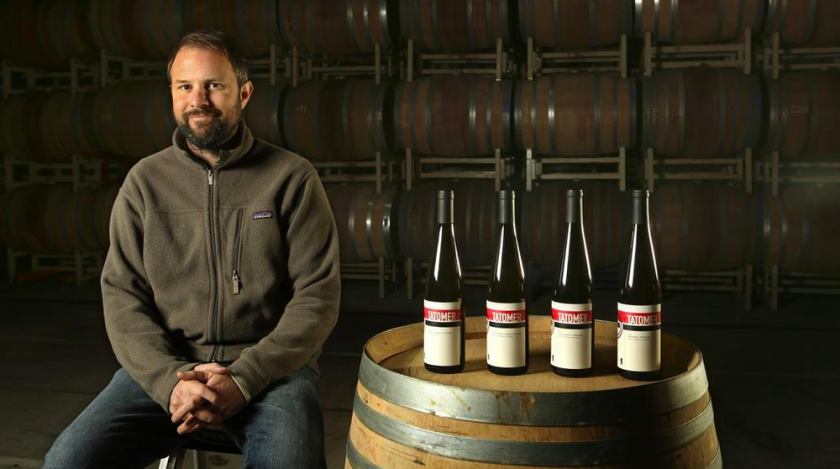Tatomer
Tatomer is first an individual and rigorous endeavor; in its particular commitments and breadth, it is by and large a peerless pursuit in this small corner of California. Graham Tatomer’s devotion to California Riesling, and Grüner in turn, began earnestly with the founding of his eponymous winery in 2008, though he first engaged with the variety long before. A gig at Santa Barbara Winery, which began in high school, introduced Graham to the Lafond Winery and its vineyard, home to among the oldest Riesling plantings in the region.
California has long been host to Riesling plantings – few of which have weathered the vacillations of the American palate – and Santa Barbara County is no exception. In fact, the region’s pioneers, Richard Sanford and Michael Benedict, planted their eponymous property to Riesling before its iconic Pinot Noir. Their peers, too, planted Riesling in the seventies, and Graham is privileged today to work with two surviving sites – Lafond along the Santa Ynez, planted in 1973, and Sisquoc, which hosts own-rooted Riesling the Santa Maria Valley. But the region primarily thrives for its interests in Pinot Noir, Chardonnay, and Syrah – and in the early years of the previous decade, there was scant community through which to seek feedback and tutelage.
So Graham went to the Wachau, in Austria, and found mentorship – and a second family – among the Knolls. His relationship with the younger Emmerich Knoll, just a few year’s Graham’s senior, unfolded as a series of lessons in balancing family legacy with the continuous progress and renewal presented by each passing vintage. A harvest internship in 2003 was the beginning of a four year engagement with Weingut Knoll and the Wachau at large, balanced with time in Santa Barbara working alongside Adam Tolmach, of Ojai Vineyard. This investment continues to pay in dividends. Aside from the immediately utilizable lessons about Riesling and Grüner, Graham gleaned subtleties in the Knolls’ work that has proven essential as his solo endeavor has flourished.
Today, Graham makes wines of a clear Austrian pedigree – they are haltingly alluring in their presentation of power, precision, and detail – but their tenor is wholly idiosyncratic: they belong to the soils and climes of Santa Barbara. He has identified superior sites for these two white varieties, and has made strides, in concert with their farmers, to dictate their farming – even when receiving mere fractions of their yields. He often picks with multiple passes in the interest of celebrating diverse textures and expressions of flavor, and sorts even further to promote purity and singular bottlings. What’s more, he enjoys the region’s favored varieties, too, and can stand alongside the best of his peers in producing tensile, delicate Pinot Noir – in minute quantities.




